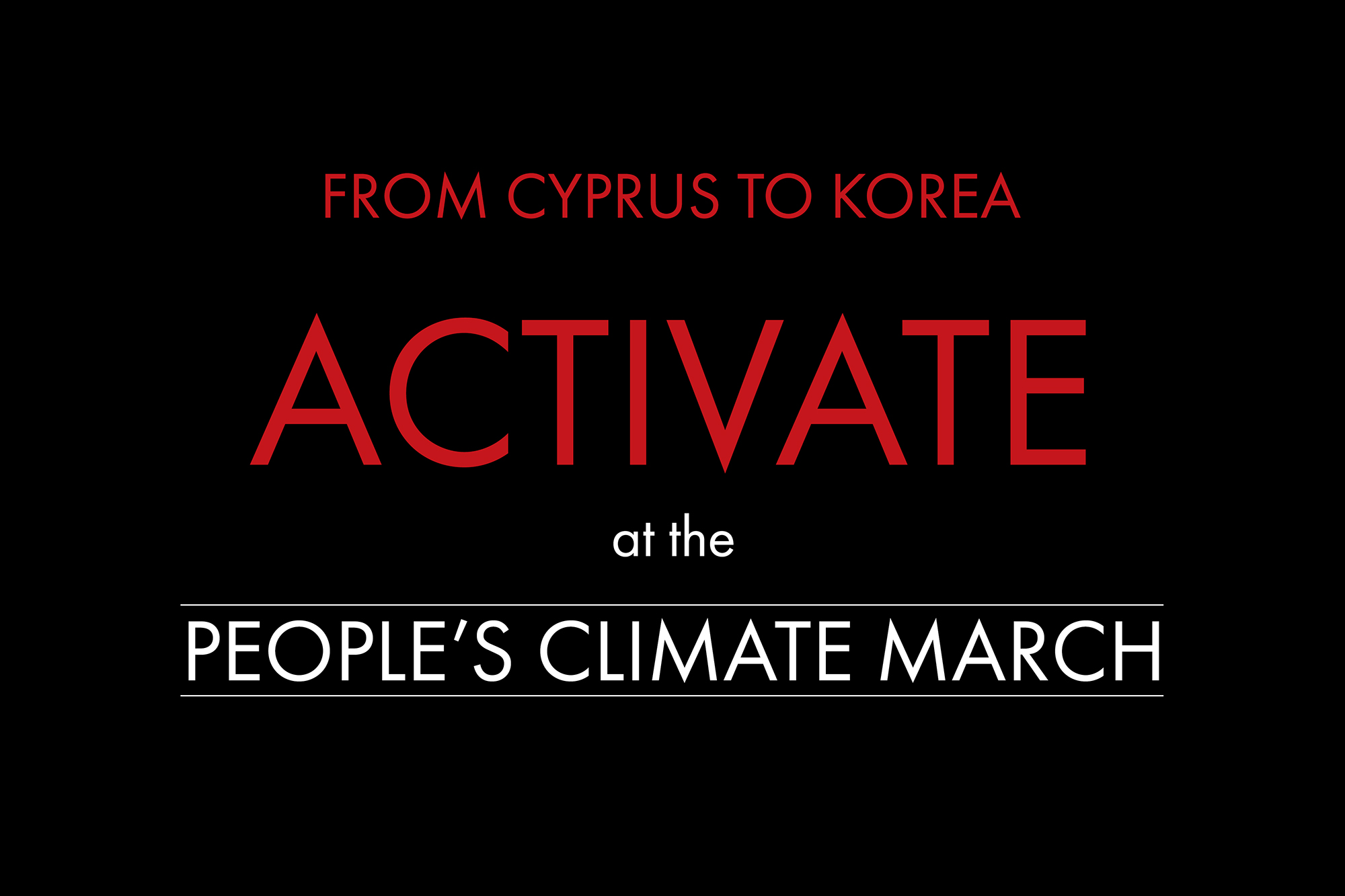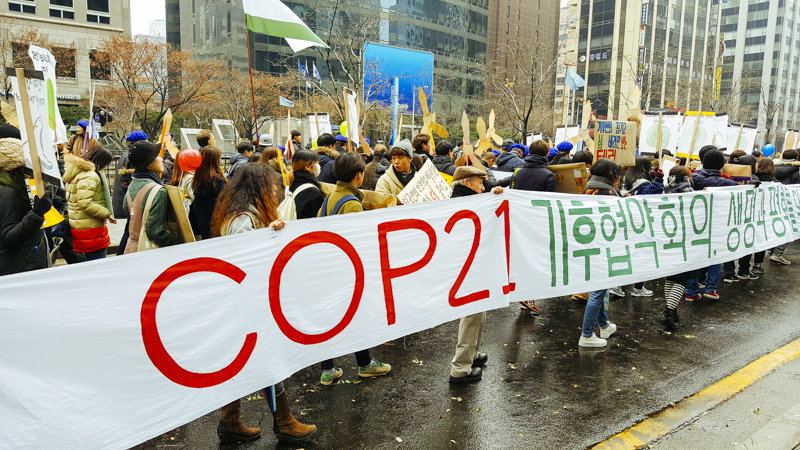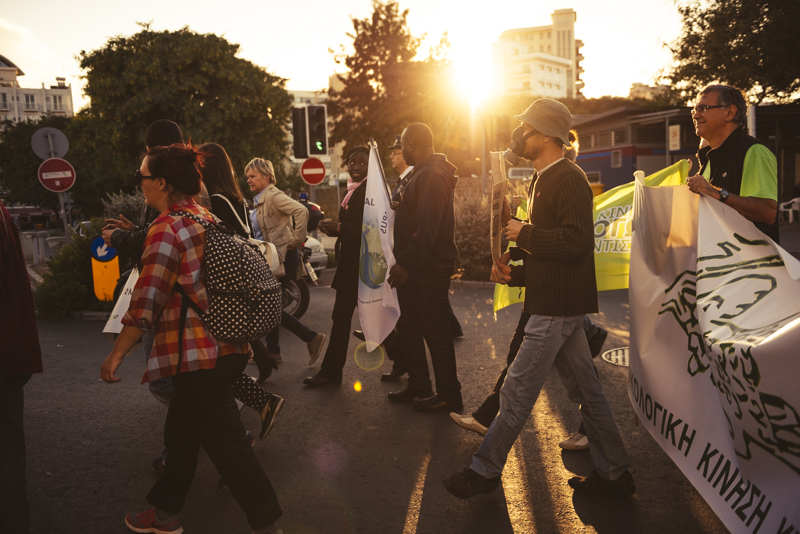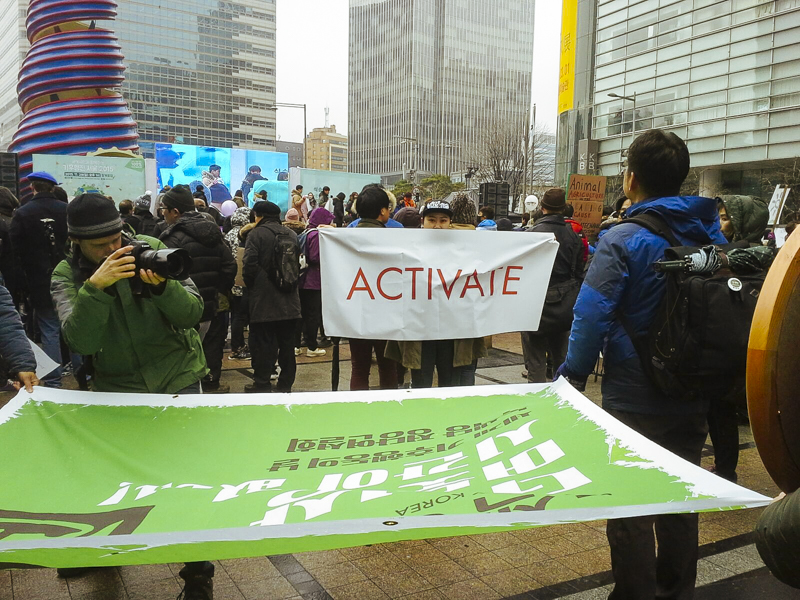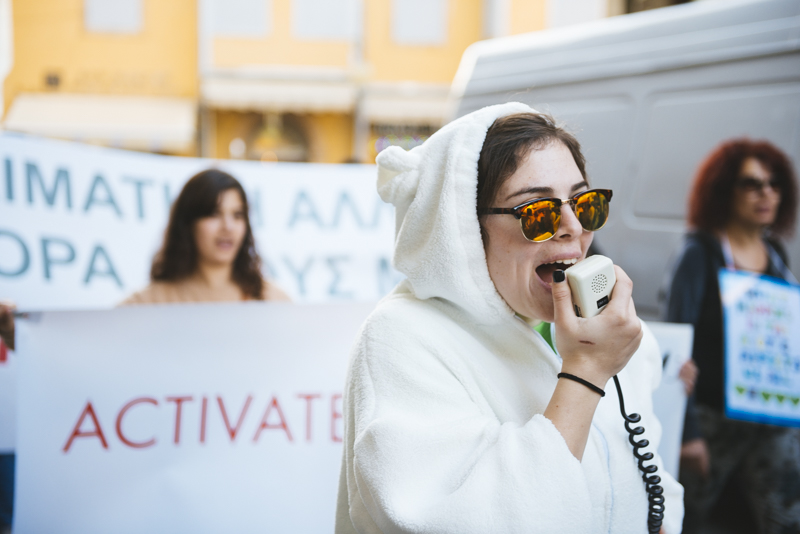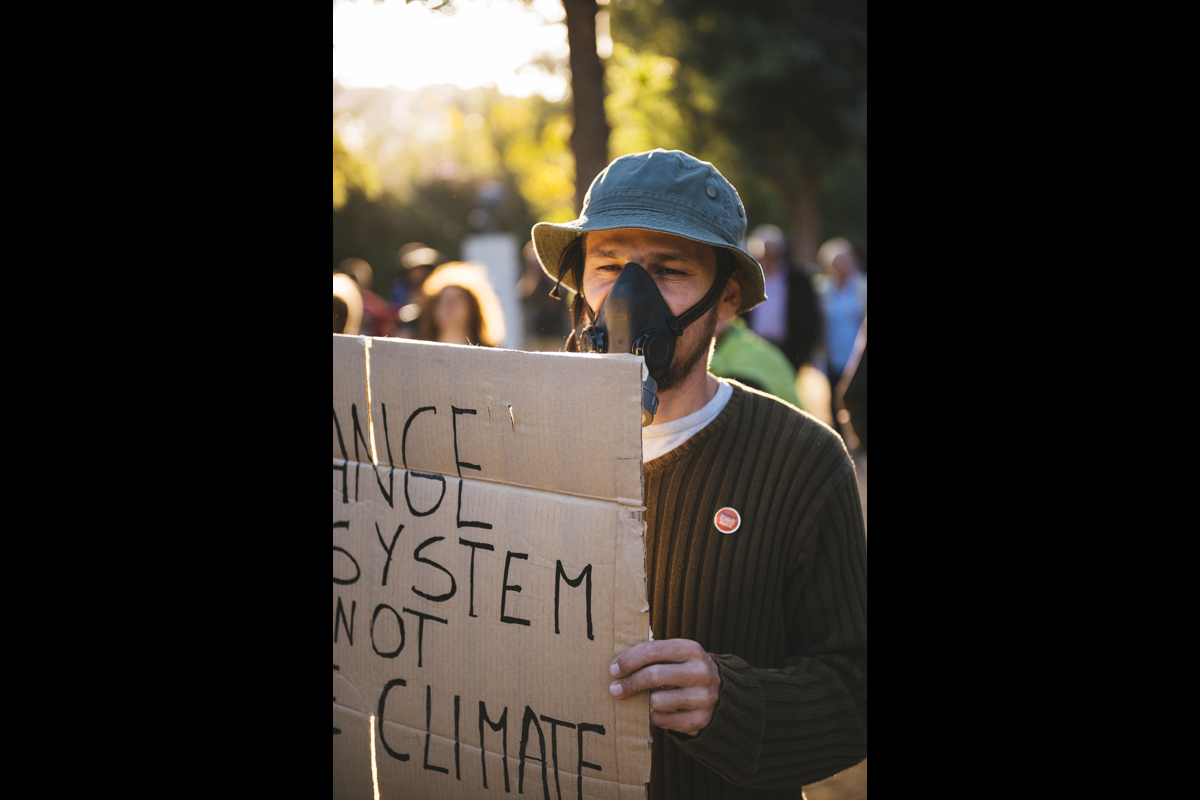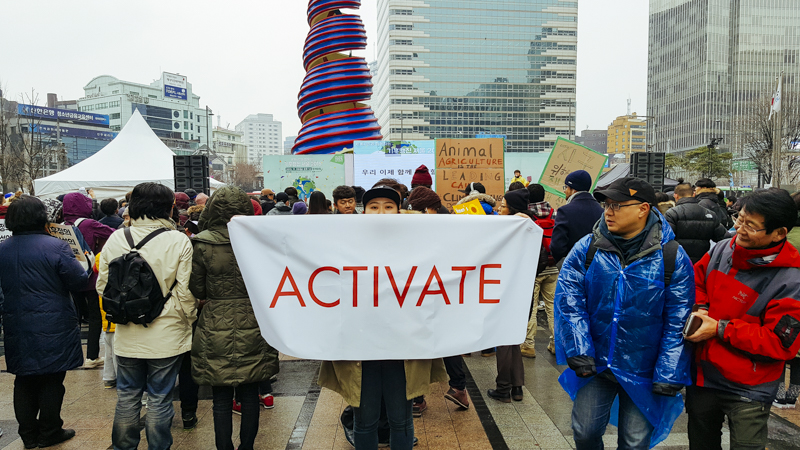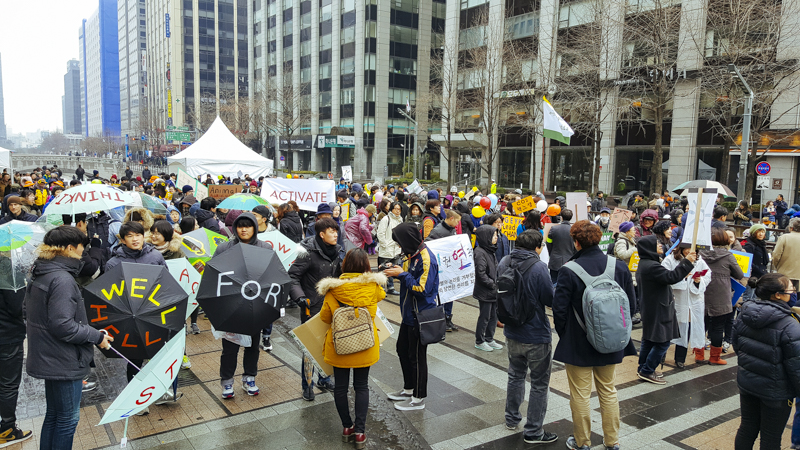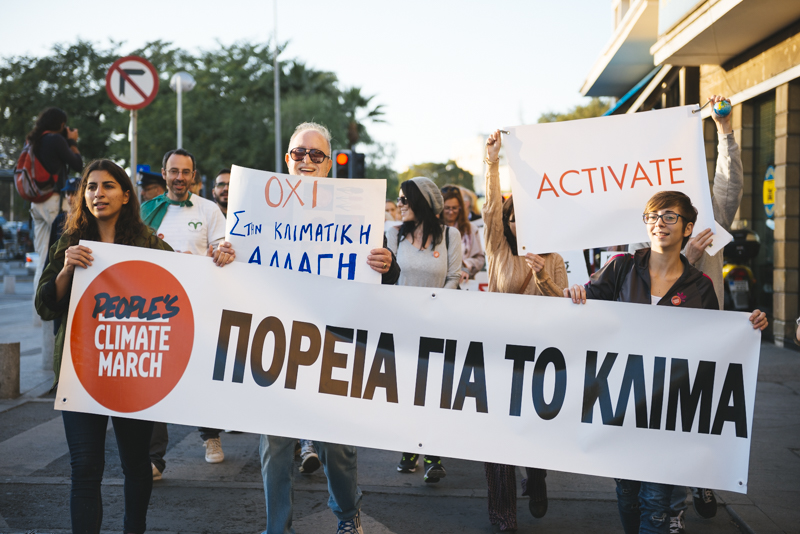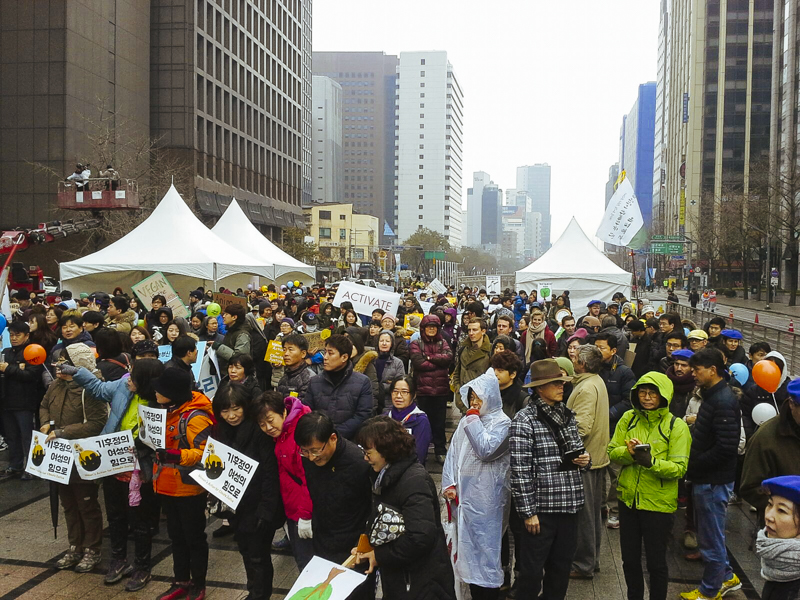Read below general information about:
International Agreements on the Environment & the state of our Climate
INTRODUCTION
Climate Change refers to changes in weather patterns on Earth over an extended period of time, such as the rise in temperatures seen in recent years. Today’s growing body of evidence on climate change supports the principle that the earth’s climate is rapidly changing in response to continued inputs of CO2 (carbon dioxide) and other greenhouse gases ― such as methane, nitrous oxide, ozone ― to the atmosphere resulting from human activities. Of these greenhouse gases, CO2 has had the largest effect on global climate as a result of enormous increases from the pre-industrial era to today. Although changes in climate are natural, human activities such as fossil fuel combustion, land use, deforestation, and current agricultural practices magnify these changes.
Today, scientists track the Earth’s temperature increase from the baseline at the start of the Industrial Revolution in the mid 19th century, when humans ramped up the burning of fossil fuels such as coal and oil. The past two decades have included 18 of the 20 warmest years since this record-keeping began around 1850, with the warming trend having rapidly increased since the 1970s. Scientists believe that surface temperatures of Earth have probably reached their warmest ever since the last inter-glacial period 125,000 years ago.
Climate change is undeniably one of the greatest challenges of our times and today we face an increasing number of droughts, heat waves, extreme weather events, melting glaciers, rising sea levels and the threat of ongoing biodiversity loss that puts at risk the natural development of our planet’s ecosystems. Climate research has indicated that each increment of warming in the future, will bring cascading consequences that would threaten every aspect and necessity on Earth including biodiversity, freshwater, and food supplies while also increasing the frequency and magnitude of extreme weather events.
This past decade has been an extreme warning alert that our planet is consistently recording hotter and hotter temperatures, and this requires serious action on the part of all nations if we wish to have a sustainable future on this planet. By continuing on the path that we are on right now, we will soon surpass the 2015 Paris Climate Agreement’s goal to limit temperature rise to 1.5-2°C above pre-industrial levels, after which the predicted effects on the planet and people’s lives will most likely be irreversible as the tipping point for preventing other processes which can drive further warming will have been surpassed.
The ten-year period 2010-2019 was the hottest decade on record, hence already 73% of the way to the 1.5°C threshold scientists warn the planet must stay under to avoid the worst impacts.
And yet, in 2021 greenhouse gas concentrations continued to surge despite the global pandemic, and more specifically, emissions from methane, the greenhouse gas which is roughly 80 times more potent than carbon dioxide in the short-term, continued to rise substantially. Continuing on the path to the predicted tipping point, even if the world stops emitting greenhouse gases, will push the Earth into “Hothouse Earth” conditions that could bring a cascade of more extreme events of melting ice, warming seas, shifting currents and dying forests that would be far less supportive of human life. In order to avoid a ‘hothouse’ state, many other efforts will be required alongside the transition away ffrom the burning of fossil fuels, including improved forest, agricultural and soil management; biodiversity conservation and technologies that remove carbon dioxide from the atmosphere and store it underground.
The UN Climate Conferences that take place every year are critical as they measure our both our ability, our willingness and commitment to lay a path to keep climate change to survivable levels and to restore nature to the equilibrium required for the planet’s survival.
However, following the UN climate conference in Glasgow in November of 2021, Climate Action Tracker - the world’s most respected climate analysis coalition - warned the world is still on track for 2.4°C of warming, despite the new and updated carbon-cutting pledges made at COP26 in Glasgow.
Scientists have concluded that greenhouse gas emissions must fall by about 45% this decade for global temperatures to stay within 1.5°C of pre-industrial levels.
Climate Action Diplomacy
In the constantly shifting political and economic realities of the current moment, the increasing impacts of extreme events on daily life across the planet, and other risks to the security of human life, Climate Action is crucial to global efforts to address the multiplying challenges of the climate crisis.
In the 21st century, and in our increasingly interconnected and inter-reliant world, diplomacy has become more proactive, multi-directional, and innovative in order to reach and include the voices of every level of stakeholders and society. Climate Action Diplomacy in particular, demands creative and practical partnerships that are working collectively on common issues and problems. It also requires for the open sharing of data and the exchange of research so that each region of the world can build an integrated approach to the climate crisis, and develop systems in which scientific knowledge and observational networks are coordinated into producing actionable results and sound policies. Climate Action ranges from maximizing the effect of mitigation and adaptation strategies and initiatives; stepping up the deployment of renewable energy and furthering commitments to reducing emissions; leveraging new technologies and focusing smart investment to ensure sustainable development and future resilience.
We see across the planet that nations are ushering in a new age of Climate Diplomacy in their foreign agendas in order to facilitate the achievement of objectives through bilateral and wider regional relationships with governments, the business sector and the broader society. This greater focus indicates that Climate Action has become one of the highest priorities for all nations for dealing with the ongoing daily challenges of maintaining and protecting water, energy and food — ensuring human security — for all peoples.
The key International Agreements on the Environment:
The United Nations Framework Convention on Climate Change (UNFCCC)
The United Nations Convention to Combat Desertification (UNCCD)
The United Nations Convention on Biological Diversity (CBD)
and
The United Nations Global Sustainable Goals 2015-30 (SDGs)
COP, or the “Conference of the Parties” refers to the governing body of an international convention, which meets periodically to assess progress. The three main United Nations international Conventions on the environment with a COP are:
—United Nations Framework Convention on Climate Change (UNFCCC) is an international environmental treaty to: stabilize greenhouse gas concentrations in the atmosphere at a level that would prevent interference with the planet’s climate system, and its COP is its the supreme decision-making body. COP24 took place in Poland in December of 2018. COP25 took place in December 2019 in Madrid, Spain. COP26 took place in Glasgow in November 2021.
—United Nations Convention to Combat Desertification (UNCCD), was set up to: combat desertification and mitigate the effects of drought through national action programs that incorporate long-term strategies supported by international cooperation and partnership arrangements. The most recent meeting, COP13 took place in Ordos City, China, 6-16 September 2017. UNCCD COP14 took place in 2-13 September 2019 in New Delhi, India. UNCCD COP15 will take place in Côte d’Ivoire in May of 2022.
—Convention on Biological Diversity (CBD) has three main goals including: the conservation of biological diversity (or biodiversity); the sustainable use of its components; and the fair and equitable sharing of benefits arising from genetic resources). The CBD also includes the Cartagena Protocol on Biosafety and the Nagoya Protocol on Access and Benefit Sharing. COP14 CBD took place in Sharm El-Sheik, Egypt in November 2018. The CBD COP15 is rescheduled to take place in 2022 in Kunming, China.
The three challenges of climate change, land degradation and biodiversity loss are equally essential to protecting the health of our natural environment, all of its species, and nature’s ability to provide food and fresh water to the growing human population.
Read about ACTIVATE’s contribution to a UNCCD (U.N. Convention to Combat Desertification) event at the U.N. New York Headquarters: the SAVE THE EARTH Green Corps U.N. Exhibition presented in partnership with the NGO Future Forest.
Event organized by Future Forest, in collaboration with the World Federation of United Nations Associations (WFUNA) and the UNCCD. →
Read about our contribution to the COP14 CBD (Convention on Biological Diversity) with the Future Earth organization
in Sharm El Sheik, Egypt 13-29 November, 2018. →
More important information:
Background information on the COP for the UNFCCC:
The United Nations Framework Convention on Climate Change (UNFCCC) opened for signature in 1992 during the Earth Summit in Rio de Janeiro, and later entered into force in 1994. Through this instrument, the United Nations has equipped itself with an action framework to fight global warming.
After its entry into force in 1994, the UNFCCC Secretariat was established in Geneva. It was then relocated to Bonn in 1995 following the “First Conference of the Parties” (COP1) in Berlin. Today, this UN Convention has near-universal membership. The countries that ratified the Convention are called the Parties to the Convention.
The COP was created and put in place in order to structure the efforts of the Parties to the Convention as they address climate change. The COP meets annually to review and assess the implementation of the UNFCCC and any other legal instruments the body adopts with the goal of reducing greenhouse gas emissions and fighting climate change. These annual UN climate change conferences are commonly referred to as COP.
Since 1995 there have been twenty-six COPs. The ground-breaking agreement on Climate Change of the Paris COP21 has been ratified by 192 states (including the EU) as Parties to the Convention out of 197 countries.
The Paris UN Climate Change Conference COP21
The Paris UN Climate Change Conference COP21 of 30 November - 11 December 2015 was hailed as an agreement that would set the standards of future global political cooperation, agreement and action on impactful climate solutions. It was also regarded as the most important international decision and focused political document on global climate governance in more than 20 years with the aim of preventing major and irreversible damage to our planet’s human and natural systems.
On the final day of this Paris Summit, world leaders from around the world signed a global climate Agreement, a legally-binding treaty for all signatories. President of the Cop21, Laurent Fabius called the agreement “a turning point..and a universal action of peace by 196 countries” in the global process to save the planet. The Agreement it was noted at the time, must also be ratified nationally, and will not become binding to its member states until 55 parties who produce over 55% of the world's greenhouse gas have sanctioned it.
The essential aim of the Paris Agreement is to: “strengthen the global response to the threat of climate change by keeping a global temperature rise this century well below 2 degrees Celsius above pre-industrial levels and to pursue efforts to limit the temperature increase even further to 1.5 degrees Celsius. Additionally, the agreement aims to strengthen the ability of countries to deal with the impacts of climate change.” In other words, world leaders agreed to try and limit Earth's rapid temperature rise to below 2°C Celsius above pre-industrial levels, with a preferred goal of 1.5°C.
Although the Paris Accord was seen by many as insufficient to halt global warming, falling far too short of what was hoped for, including a lack of mechanism to ensure that countries enforce the measures, it has been established that it is a good start when compared to the past attempts. With this action, governments, businesses, experts, advocates, civil society and citizens worldwide did finally officially recognize the universal nature of climate change, marking a pivotal moment in modern environmental history, and a significant shift in global perception on climate progress.
Climate update 2015-21:
As greenhouse gas concentrations lead to a rise in global temperatures, data in early 2020 from NASA and the National Oceanic and Atmospheric Administration showed that humans lived through the hottest decade (2010-2019) and 2015-2019 were the five top warmest years on record.
In 2018, NASA declared the year was the fourth-warmest year in 139 years of records, with average temperatures across land and sea surfaces 1.42 degrees Fahrenheit above the 20th-century average. The summer season of 2018 saw some of the strongest, longest-lasting global heat waves in decades affecting countries from Siberia to the Mediterranean, from North America to East Asia; at least nine all-time temperature records were broken in the USA and in many places around the world. Kumagaya, Japan reached 42°C, the highest-ever recorded temperature in the country; a village in Oman saw temperatures remain above 42°C for 51 hours straight, which would break the world record for highest minimum temperature ever; the dramatic wildfires of 2018 can be seen as a global-scale phenomenon, in Europe this year across Europe is up by roughly 40%.
On 1 October 2018, the latest scientific report released by the U.N. Intergovernmental Panel on Climate Change (IPCC )* ― the leading U.N. consortium of scientists studying the speed and scope of human-caused temperature rise ― authored by 91 researchers from 40 countries citing more than 6,000 scientific references, detailed the challenge it will be to keep the planet from warming beyond the 1.5°C target, considered the aspirational goal of the 2015 Paris Climate Accord.
The summer of 2019 also proved to be record-breaking. Temperatures in July soared to historic highs throughout Western Europe, and heat records were shattered in regions of Belgium, France, Germany, the Netherlands, and the UK. The dangerous temperatures across the European continent—as well as parts of the United States and Asia—came as new research revealed that the planet is warming at an unprecedented rate not seen in the past 2,000 years. Following the summer heat wave, the extreme temperatures shifted north and began massive ice melts in Greenland which began losing up to 12.5 billion tons of ice in a single day, while record wildfires raged from the Amazon to Australia to the Arctic.
The new decade brought the news that another heat milestone had been broken, with 2020 experiencing the warmest January on record globally, and atmospheric concentrations of CO2—which causes global warming—at their highest level in at least 800,000 years. On 6 February, Antarctica hit 18.3°C (64.9F) degrees, the highest temperature ever recorded on that continent. Italy recorded a temperature of 48.8°C (119.8F) on August 11 in Sicily. The year 2020 was also the hottest on record for Europe overall. Likewise, by June, the Arctic registered at more than 37.7°C (100F), with this Siberian heat wave once again showing that climate change is causing the Arctic to warm twice as quickly as the rest of the world, and with that the thawing of the Arctic permafrost. At the end of July, Canada’s last fully intact Arctic ice shelf collapsed. And temperatures at the Greenland summit over the weekend of August 14-15 rose above freezing for the third time in less than a decade, causing rain to fall there for the first time on record, with 7 billion tons of water falling on the ice sheet. On 16 August, temperatures surged to 54.4°C (130F) in Death Valley, California.
* The IPCC was created to provide policymakers with regular scientific assessments on climate change, its implications and potential future risks, as well as to put forward adaptation and mitigation options. Through its assessments, the IPCC determines the state of knowledge on climate change. NB, It was the IPCC’s Fifth Assessment Report that provided the scientific input for the Paris Agreement.
As the world faced its greatest heath challenge in 2020 of the COVID-19 pandemic which strained national and local health systems, it showed us that the danger of extreme weather, such as catastrophic hurricane storms, flooding, and other disasters put populations around the world at a double threat. Such emergency situations render individuals more vulnerable to the disease and its impacts, with an increase in spread when people are in crowded emergency shelters or displacement sites, where physical distancing is difficult to ensure, hand-washing impossible if water and sanitation infrastructure were to be damaged or destroyed.
The year 2021 was another year of extreme weather events, the 45th year in a row with warmer-than-normal global temperatures, and the eighth of the hottest years since record-keeping began in 1880. Almost every corner of the world felt the effects of the rapidly warming planet last year. The oceans’ temperature also reached a historic high, as warmest on record for the 3rd year in a row — yet another sign of the worsening climate crisis caused by humans. The combined land and ocean surface temperature was 0.93°C (1.67F) above the 20th-century average of 15.8°C (60.4F)
The summer of 2021 in Europe was the warmest on record, the Mediterranean breaking heat records by large margins, and with extreme weather events across the continent, including the deadly floods in Germany, Belgium and the Netherlands, with this extreme flooding killing at least 185 people, as well as the intense wildfires in the eastern and central Mediterranean. On 22 June 2021, the Kuwaiti city of Nuwaiseeb recorded the hottest temperature on earth for 2021 at 53.2°C (128F).
July of 2021 was the Earth’s hottest month ever recorded, and in North America, temperatures soared above 37.8°C (100F) in California and the Pacific Northwest, and British Columbia. There were record wildfires in California, which was also facing a drought emergency after recording its driest year in nearly a century, and its largest-ever single wildfire in its history; eight of the 10 largest fires in California history took place in just the last five years. That month, the city of Yakutsk in Russian Siberia, known as the world’s coldest city, was blanketed in haze from nearby wildfires tear through forests following weeks of heatwaves, with smoke traveling as far away as Alaska.
2021 was also a year of devastating storms and floods, the third most active Atlantic hurricane season on record, according to the NOAA. Deadly hurricanes and flooding were seen along the Gulf of Mexico and on the Atlantic coast in the U.S. In December, Typhoon Rai slammed into the Philippines, leaving over 375 people dead and forcing hundreds of thousands to evacuate. In the same month, Alaska reached temperatures warmer than Southern California; Kodiak Island in southern Alaska set a record for the warmest December day at 19.4°C (67F).
The U.N. Intergovernmental Panel on Climate Change* report of 2021, published in August, showed global temperature is already at around 1.2°C of warming, and expressed the global crisis in simple terms:
“It is unequivocal that human influence has warmed the atmosphere, ocean and land”, and In a statement about the report, U.N. Secretary-General António Guterres called the planet’s current path “catastrophic.”
This report also concluded that the only way to halt the ongoing and alarming warming trend is by making deep cuts to greenhouse gas emissions, while also removing the planet-warming gases humans have already put into the atmosphere.
Scientists expect that weather and climate-related disasters to carry into 2022, and for global average temperatures to be warmer than 2021.
Now must be the time for real global action to reverse man-made climate change.
See below for updates on the U.N. Framework Convention on Climate Change.
Climate Change and its relation to the topic of water:
Climate change is a multidimensional issue. At the center of the climate change discussion is water.
The dramatic increase in the Earth’s temperature in recent years due to global warming has shifted and disrupted the planet’s natural hydrological cycle and put our ecosystems under increasing stress. The consequences of these changes are affecting life across the globe; on the most basic level, in the form of extreme weather patterns and their effects - colder winters, more intense floods and dramatic hurricanes, superstorms; severe drought, wildfires and longer and drier summers, melting glaciers and rising sea levels worldwide. These changes will continue to affect our lives if the global community does not have an integrated and unified response.
In addition to this, water experts agree that even if our dependence on fossil fuels is reduced and greenhouse gas emissions are reversed, if we prolong our continued abuse of our planet’s fresh water and its water systems, we will not be able to stop climate change.
Thus, in order to tackle the greatest challenge of our age, climate change, we must also appreciate the need to address the world’s multiple water crises from every angle - not only from the environmental - and consider the larger perspective of corporate, economic, political pressures that are still driving our water governance.
The 17 Sustainable Development Goals (SDGs) Agreement adopted by world leaders at the United Nations General Assembly on 25 - 27 September 2015 just prior to the Paris Agreement was a powerfully significant and collective action - on poverty, injustice, gender equality, health, global development and environmental sustainability. Each goal agreed upon at the Sustainable Development Summit has specific targets to be achieved over the next 15 years.
“The global goals provide a unique opportunity to end poverty, reduce inequality, build peaceful societies and fix climate change. All nations and all citizens have a role to play to achieve these global goals. We hope that the message of the goals will reach everyone on the planet..” ― U.N. Sec. General Ban Ki-Moon, referring to this universal sustainable development campaign.
Within this vision of ensuring a healthy planet for future generations were pledges that had to do more specifically with water-related issues:
• CLEAN WATER AND SANITATION (Goal #6): “Ensure availability and sustainable management of water and sanitation for all”
• DECISIVE CLIMATE ACTION (Goal #13): “Take urgent action to combat climate change and its impacts”
• LIFE BELOW WATER (Goal #14): “Conserve and sustainably use the oceans, seas and marine resources for sustainable development”
“WATER DAY” at the COP21: During the Paris Summit, the World Water Council and over a dozen members of the international water community came together in a collective effort represented by the #ClimateIsWater initiative, with the shared objective of elevating the recognition for water and climate at the political level, and in the climate change discussions from one COP to the next. The need to place water issues at the heart of climate discussions was stressed, as the reality is that water does not adequately or explicitly appear in the official agenda - although all impacts of climate change are manifested through water. In 2016 the World Water Council plans to build on the momentum of the #ClimateisWater campaign, including at the COP22 scheduled to take place in Marrakesh in November 2016.
“It is through water that we can measure both the severity and the acceleration of global warming; however, we can also see that, through water, solutions can be found.” ― Ségolène Royal, France’s energy and environment minister at the COP21 ‘Climate is Water’ event.
Nonetheless, water-related issues did appear in the Paris agreement through the following elements:
• In reference to the post-2015 Sustainable Development Framework, in which water is a specific objective in Global Goal #6.
• In reference to human rights in the preamble; that the right to water and sanitation was recognized as a fundamental right in 2010.
• Through the importance given to adaptation and its financing, in which water is a central issue.
• Through the emphasis on the Intended Nationally Determined Contributions, in which water is the first priority for adaptation.
U.N. Resolution on Human Rights to Water and Sanitation: On 17 December 2015, the United Nations General Assembly passed and adopted a Resolution on the Human Rights to Water and Sanitation, recalling the 28 July 2010 resolution, which recognized the right to safe and clean drinking water and sanitation as a human right that is essential for the full enjoyment of life and all human rights. With this renewed measure, the U.N. recognizes the distinction between the human right to water and that of sanitation; the two issues remain related and both are derived from the right to an adequate standard of living. The text was adopted by consensus, so all UN Member State have now agreed the following:
• That everyone is entitled “to have access to sufficient, safe, acceptable, physically accessible and affordable water for personal and domestic use”.
• That everyone is entitled “to have physical and affordable access to sanitation, in all spheres of life, that is safe, hygienic, secure, and socially and culturally acceptable and that provides privacy and ensures dignity”.
A Paris Agreement citizens’ initiative on climate change:
The People’s Climate March
29 November 2015
On 29 November, hours before world leaders meet at the Paris Climate Summit, global climate change marches took place in over 2000 cities around the world to ask political leaders to make a bold commitment to action to solve the planet’s growing crises. It was the largest global climate change mobilization in history.
People around the world joined the Marches to set out their demands on climate justice. These public events marked the start of two weeks of actions that had been planned to take place over the duration of the summit, to build global mobilization and a united effort by individuals everywhere who striving for a future that benefits people and planet alike.
The Climate March events culminated in a mass demonstration in Paris on 12 December.
The Cyprus People’s Climate March was organized by the environmental NGO Friends of the Earth Cyprus, a member group of Friends of the Earth Europe and Friends of the Earth International.
ACTIVATE’s partners in Nicosia, Cyprus and Seoul, South Korea, marched alongside their fellow citizens in support of this common purpose.
These United Nations SDGs and COP Agreements will together potentially shape global efforts to address some of the world’s most pressing future challenges, reconcile the economic and environmental goals of the global community, and inspire future decisive and meaningful action for people and the planet - to safeguard the integrity of our vital ecosystems for a liveable climate, for clean air, and for pure water.
See below for COP UNFCCC updates
Updates on the U.N. Framework Convention on Climate Change
2015 Paris | Climate Change Summit | COP21
2016 Marrakesh | Climate Change Conference | COP22
2017 Bonn | Climate Change Conference | COP23
2018 Katowice | Climate Change Conference | COP24
2019 Madrid | Climate Change Conference | COP25
2021 Glasgow | Climate Change Conference | COP26
2022 Sharm El-Sheikh | Climate Change Conference | COP27
2023 Dubai | Climate Change Conference | COP28
2024 Baku | Climate Change Conference | COP29
2025 Belém | Climate Change Conference | COP30


















